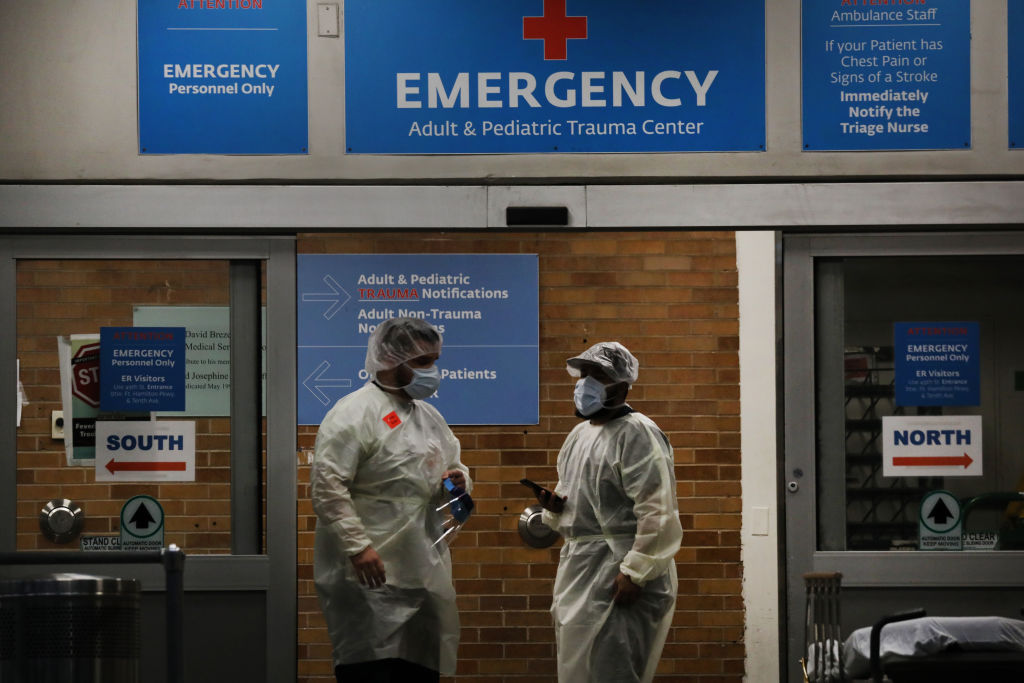
In late May, an otherwise relatively healthy New York City woman began having trouble speaking, and she felt weak on the right side of her body. But she could still walk and take care of herself, and with the coronavirus pandemic raging, visiting a hospital seemed too dangerous. The next day, her speech had gotten worse, and she could barely move the right side of her body. Her family called 911 and she was rushed to the hospital, where doctors determined she had suffered a stroke.
By the time the woman left the hospital, she was no longer able to walk by herself, and was having difficulty speaking and understanding others. The delay in seeking treatment likely exacerbated her condition, says Dr. Alexander Merkler, a neurologist at NewYork-Presbyterian Hospital and an assistant professor of neurology at Weill Cornell Medicine. “Had she come to the hospital earlier, we would have been able to give her the right therapies that would have improved her quality of life,” he says. (Dr. Merkler, who relayed the story to TIME, could not share the woman’s name due to privacy laws.)
Stories like this one are playing out in hospitals nationwide as people avoid emergency rooms for fear of contracting COVID-19. Emergency room visits across the country were down 42% in late March and April of this year compared to a similar period last year, according to a June 3 report from the Centers for Disease Control and Prevention (CDC). While there were significant increases in respiratory-related visits during that period—likely related to the coronavirus pandemic—even those admissions didn’t make up for a massive drop in visits for a slew of other ailments.
“We’ve never seen anything like this before,” says the CDC’s Kathleen Hartnett, an epidemiologist and lead author of the paper. Such drastic drops have been recorded in unusual times at individual hospitals, like during the 2003 SARS outbreak in Hong Kong. But widespread falloffs in admissions across an entire country are unprecedented. “In the history of our system, we have never seen a drop like this,” Hartnett says. (The latest figures show more ER visits in late May than the lowest point in April, but they were still down more than 25% year-over-year.)
There are a handful of potential reasons that fewer Americans are showing up to the emergency room. First, coronavirus lockdowns mean many of us aren’t engaging in risky behavior as often as we usually do—people are driving less (meaning fewer collisions) and recreational sports leagues are on hold (meaning fewer broken bones and contusions) for instance. Second, those same lockdowns could also be reducing the spread of non-coronavirus infections that normally drive some ER admissions, like influenza. Finally, more people than usual could be managing their less-serious medical issues at home rather than risk a hospital visit right now.
But the CDC report’s authors worry about another explanation: the decline could be at least in part due to people avoiding hospitals despite legitimately needing immediate treatment, like the New York woman. While the number of ER visits for cardiac arrest increased during the pandemic, the number of visits for nonspecific chest pain decreased. That, the authors say, suggests that people aren’t seeking medical attention even if they’re showing the classic signs of a cardiovascular episode—potentially increasing their risk of complications or death. “We really do not want people delaying when they have the signs and symptoms of a stroke or a heart attack,” says Hartnett.
In order to reassure nervous patients, Hartnett says that hospitals should follow CDC infection control guidelines to prevent COVID-19 transmission. Entrances should be limited, and patients should be quickly assessed for coronavirus symptoms, and separated from others if necessary. If people are unsure whether they should seek emergency treatment, Hartnett says they should get advice from their medical provider or a triage line. Heart attack and stroke symptoms, however, are always emergencies.
“People are scared, and I’m not going to say that I wasn’t scared as well,” Dr. Merkler says of the COVID-19 pandemic. “But at the same time, if you’re having a medical emergency, which a stroke is, the benefit of going to the hospital and receiving appropriate care outweighs the risk of just staying home.”
More Must-Reads from TIME
- Cybersecurity Experts Are Sounding the Alarm on DOGE
- Meet the 2025 Women of the Year
- The Harsh Truth About Disability Inclusion
- Why Do More Young Adults Have Cancer?
- Colman Domingo Leads With Radical Love
- How to Get Better at Doing Things Alone
- Michelle Zauner Stares Down the Darkness
Write to Alejandro de la Garza at alejandro.delagarza@time.com